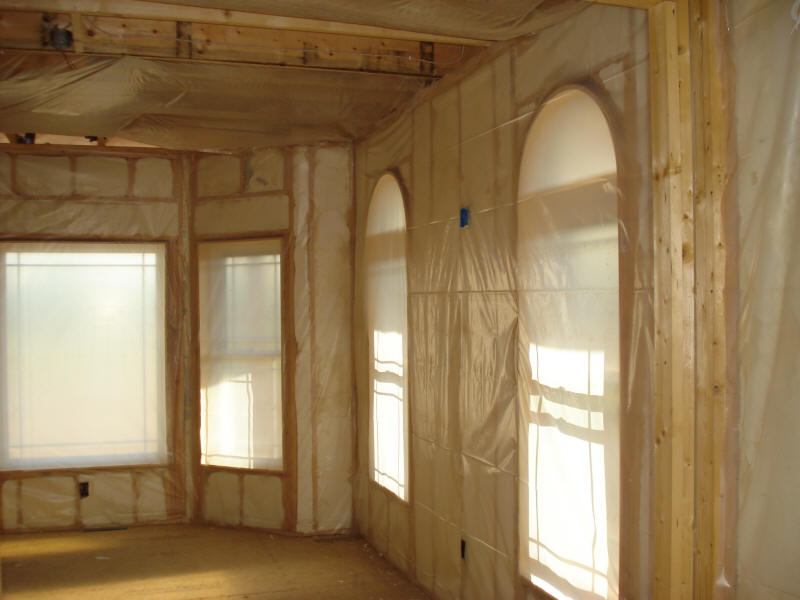Open Cell Insulation
Insulate hard to reach nooks and crannies, reduce air infiltration, and soundproof with rapidly expanding open cell spray foam.
When the summer heat is making its way into your home, air-conditioned air isn’t staying in, you see icicles along your roofline in the winter months, or you’re losing heat upstairs, it can be a sign that you need attic insulation.
At Upstate Spray Foam Insulation, we want to keep you comfortable all year round, and stop you from losing heat, cooled air, and money, through the ceilings in your home. Even if you have existing insulation in your ceilings (or attic), it may not be stopping enough air from migrating through your ceilings and out through your attic.
How it works
Our Open Cell Spray Foam is a two-component water blown spray foam. When its two components mix they react instantly and expand into a low-density, open cell foam with an in-place core density of 0.45 – 0.55 pound per cubic foot. Open Cell Foam provides thermal insulation for the interior of buildings. Open Cell also only reduces air infiltration, where Closed Cell Foam Systems stop it.
The Beneficial Characteristics of Closed Cell Spray Foam
- Heat Resistance Rating of R-3.6 per inch
- Seals Every Nook and Cranny when applied correctly closing off possible air leaks or existing air leakage areas.
- Seals around recessed lighting, electrical outlet boxes, wiring intrusions and all bypasses.

Application
Upstate Spray Foam Insulation applies Open Cell ½ lb. Foam Systems into open-wall cavities, crawl- spaces, perimeter joists (any exposed rim or band-joist), cathedral/sloped ceilings at a heat resistance rating of R-3.6 per inch.
While the product must be installed to local code, the amount of application varies. All Open Cell Foam systems also require a vapor diffusion retarder (vapor barrier) after application. This system fully cures to touch within 15-seconds.
Requirements
During application, all surfaces must be free of oil, grease, and debris. The surface must be dry as well. When applying Open Cell Foam the working area temperature must be a minimum of 40-degrees Fahrenheit. Unfortunately, Spray Foam systems cannot be installed into existing homes, unless the un- insulated surface is completely exposed.
Ending Result
In carrying half of the R-value in that of Closed Cell Foam, Open Cell also lacks performance in condensation or moisture prone areas. Where Closed Cell Foam completely turns away and repels the moisture, Open Cell will absorb it into its sponge-like surface.
Open Cell Foam must be applied in much more thickness than Closed Cell Foam because of its low R-value rating however it is consistently considered as the next best insulation behind Closed Cell.
Considered a semi-rigid foam, it adds minor structural strength to your home or building while still filling every nook and cranny, sealing all voids from the outside elements.
Get A Free Estimate
We've got you covered
Insulation Services
FreeInsulation
The EmPower+ New York program provides free energy efficiency solutions for income-eligible New York residents. Available for both homeowners and renters.